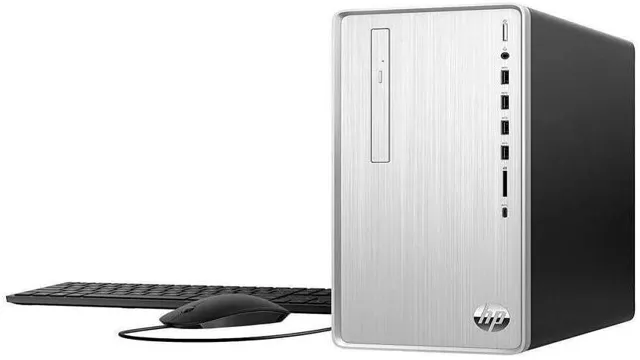If you’re wondering how much space you’ll get with a 1TB SSD, you’re not alone. The abbreviation “TB” stands for terabyte, and it’s not always clear how many gigabytes (GB) are in a terabyte. A 1TB SSD is enough space for most people’s needs, but it’s important to know exactly how much room you’re getting when you purchase one.
In this blog, we’ll explore how many GB are in a terabyte and what that means for your storage needs. So, let’s dive in and clear up any confusion!
Understanding Capacity Measurement
If you’re wondering “1tb SSD equal to how many GB?”, then the answer is 1000 GB. SSDs, or Solid State Drives, are becoming more popular than traditional hard drives due to their faster speed, durability, and reliability. But it can be confusing to understand capacity measurements when it comes to storage devices.
For example, you may have heard of “bit”, “byte”, “kilobyte”, “megabyte”, “gigabyte”, and “terabyte”. A bit is the smallest unit of data, which is either a 0 or A byte is made up of 8 bits, and is therefore the basic unit of memory.
It takes 1024 bytes to make up a kilobyte, 1024 kilobytes to make up a megabyte, 1024 megabytes to make up a gigabyte, and finally 1024 gigabytes to make up a terabyte. So when you have a 1TB SSD, you have a storage device that can hold 1000 gigabytes of data.
Terabyte (TB) vs. Gigabyte (GB)
When it comes to measuring storage capacity, it can be confusing to differentiate between terabytes (TB) and gigabytes (GB). Essentially, a terabyte is equal to 1,000 GB. This means that a TB can hold 1,000 times more data than a GB.
However, it’s important to keep in mind that the actual amount of storage space may vary depending on the device or provider. For example, a solid-state drive (SSD) with a capacity of 1 TB may only have about 930 GB of available storage due to formatting and other factors. It’s always a good idea to double-check the actual storage space before making any assumptions.
Overall, knowing the difference between TB and GB is important for making informed decisions when it comes to purchasing storage devices or choosing a cloud storage provider.

Why SSD Capacity is Stated in TB?
Have you ever wondered why SSD capacity is stated in TB? Well, it’s because of the way storage capacity is measured. In the technology world, we use a system of numbers and prefixes to measure storage. For example, a KB is a kilobyte, while a GB is a gigabyte.
Similarly, a TB is a terabyte, which is a unit of digital information storage that represents one trillion bytes. Since SSDs can store large amounts of data, their capacity is measured in terabytes. This means that the higher the number of terabytes, the more data the SSD can hold.
So if you’re in need of more storage capacity, simply look for an SSD with a higher TB rating. It’s that simple!
Calculating SSD Capacity in GB
When it comes to SSD capacity, it can be confusing to understand the different measurements used. One common question is “1TB SSD equal to how many GB?” The answer is simple: 1 terabyte (TB) of SSD storage capacity is equal to 1000 gigabytes (GB). This means that if you have a 1TB SSD, you have 1000GB of storage space available for your files and applications.
It’s important to keep in mind that the actual amount of storage space may vary slightly depending on the formatting and type of SSD you have. Additionally, it’s always advisable to leave some free space on your SSD to ensure optimal performance. Overall, understanding SSD capacity and measurements is important for ensuring you have enough storage space for your needs.
Conversion Formula
Calculating SSD capacity in GB can be a little bit confusing, especially if you’re unfamiliar with the math involved. Fortunately, there’s a simple formula you can use to figure it out. First, calculate the total number of NAND gates in the SSD.
This can be done by multiplying the number of die by the number of planes per die by the number of blocks per plane by the number of pages per block by the number of NAND gates per page. Once you have the total number of NAND gates, you can calculate the total capacity by multiplying it by the NAND gate size. For example, if you have 1 billion NAND gates and the NAND gate size is 16GB, then the total SSD capacity would be 16 terabytes (1 billion x 16GB).
It’s important to note that this formula doesn’t take into account other factors that can impact the actual usable capacity of an SSD, such as over-provisioning and firmware. But it’s a good starting point to help you get a general idea of how much storage space you can expect from your SSD.
Examples of 1TB SSD Conversion to GB
Calculating SSD Capacity in GB. When it comes to calculating the capacity of an SSD, most manufacturers advertise their products in terms of TB (Terabytes), making it confusing for some users to understand the exact capacity in GB (Gigabytes). In fact, a 1TB SSD can be translated to not only 1000GB but also 1024GB, depending on how it’s calculated.
To understand this, it’s essential to comprehend the binary nature of computers that use base 2 calculations instead of base 10 used in the metric system. This means that 1KB is equal to 1024 bytes, 1MB is equal to 1024KB, 1GB equals to 1024MB, and so on. So, to convert 1TB (Terabyte) into GB (Gigabytes), all you need to do is multiply 1024 (because there are 1024GB in 1TB), which results in 1024GB.
However, some manufacturers use the metric system, which implies one TB equals 1000GB. Therefore, ensure to cross-check with the manufacturer’s website or specifications to avoid any confusion. Ultimately, when it comes to calculating the capacity of an SSD, knowing how to convert TB to GB is crucial, especially for users who need accurate figures to estimate the amount of data they can store or work with.
Factors Affecting Actual Capacity
When it comes to calculating the actual capacity of a SSD, there are several factors to consider. One of the most important is the overhead that is present in the SSD itself. This overhead can include things like spare blocks, bad block management, and wear leveling.
When you factor in these overheads, you could end up losing as much as 10% or more of your SSD’s capacity. Another factor to consider is the formatting of the drive. Since SSDs are formatted differently than traditional hard drives, you’ll find that the actual capacity can be lower than what is advertised.
This is because the formatting process requires some space to be reserved, thus lowering the actual capacity. Other factors that can impact the actual capacity of an SSD include the manufacturing process, the firmware of the drive, and even something as simple as how much data you have stored on it. By keeping these factors in mind, you can more accurately calculate the actual capacity of your SSD and make the most of your available storage space.
Conclusion
In conclusion, one could say that a 1TB SSD is equal to a whopping 1,000GB – that’s enough storage space to hold all your memes, cat videos, and family photos, with plenty of room to spare for whatever digital wonders the future holds. So if you’re in the market for a new hard drive, go big or go home and opt for the 1TB SSD. Your computer (and your inner data hoarder) will thank you.
“
FAQs
1. How many 1GB files can be stored in a 1TB SSD? A: A 1TB SSD can store up to 1,000 1GB files. 2. Is a 1TB SSD better than a 500GB SSD? A: Yes, a 1TB SSD is better than a 500GB SSD as it offers double the storage capacity. 3. Can I upgrade my laptop hard drive to a 1TB SSD? A: Yes, you can upgrade your laptop hard drive to a 1TB SSD if your laptop supports an SSD. 4. How long does a 1TB SSD last? A: The lifespan of a 1TB SSD depends on various factors, but it can last up to 10 years with normal usage.
